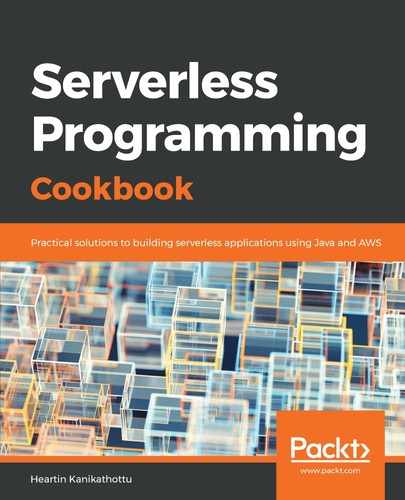Let's look at some of the Azure services that we can use to implement Serverless applications:
- Serverless computing on AWS:
Azure functions are event-driven, Serverless compute functions that can scale on demand. We need to pay only for the resources we consume. The corresponding AWS service is AWS Lambda.
- Access management:
Azure Active Directory is Microsoft's identity and access management service. The corresponding AWS service is IAM. - Resource provisioning and management:
The Azure Resource Manager service enables us to define the infrastructure and dependencies for our app in a single declarative template and then repeatedly deploy the app using the template. The corresponding AWS service is CloudFormation. - Simple object store:
Blob Storage is a scalable object storage for unstructured data. The corresponding service in AWS is Amazon S3. - API management:
The API Management service in Azure helps in publishing, managing, securi - ng, and analyzing APIs. The corresponding service in AWS is API Gateway.
- Storage tier:
Azure Cosmos DB is a distributed multi-model database service. The corresponding service that we used in this book is Amazon DynamoDB. - User management:
Azure Active Directory B2C in Azure is a customer identity and access management service. It enables us to use social accounts, emails, and custom IdPs. The corresponding service in AWS that helps with user management is Amazon Cognito. - Domain hosting and DNS management:
Azure DNS can be used to host domains in Azure. The Traffic Manager service in Azure can route incoming traffic for high performance and availability. Amazon Route 53 can be used for both domain hosting and DNS management. - Content Delivery Network:
The Content Delivery Network service in Azure is used for global content delivery and acceleration. The corresponding service in AWS is Amazon CloudFront. - Queue service:
The Queue Storage service in Azure can be used to create simple message queues for large workloads. The corresponding service in AWS is Amazon SQS. - Notification service:
The Notification Hubs service in Azure can be used to send push notifications to different platforms in response to API calls. The corresponding service in AWS is Amazon SNS. - Managing events and streams:
The Event Hubs service in Azure can be used for real-time data ingestion. The corresponding service from Amazon that we have discussed in this book is Amazon Kinesis Data Streams. - Machine learning service:
Azure Machine Learning Studio is a fully managed service that we can use to build, deploy, and share predictive analytics solutions. The corresponding service in AWS that we have discussed in this book is the Amazon Machine Learning service. - Monitoring:
With the Azure Monitor service, we can monitor applications in Azure with analytics and machine learning support. The corresponding service in AWS that we have discussed in this book is Amazon CloudWatch. - Data warehouse management:
SQL Data Warehouse is Azure's data warehouse solution. The corresponding service in AWS is Amazon Redshift. - Data integration/data pipeline:
The Data Factory service in Azure can be used to create, schedule, and monitor data pipelines. In AWS, we can use the Data Pipeline service for building data pipelines. - Mobile:
The Mobile Apps service helps in building engaging iOS, Android, and Windows apps. It also enables single sign-on functionality with Azure Active Directory. AWS AppSync is a Serverless backend for mobile, web, and enterprise applications.
